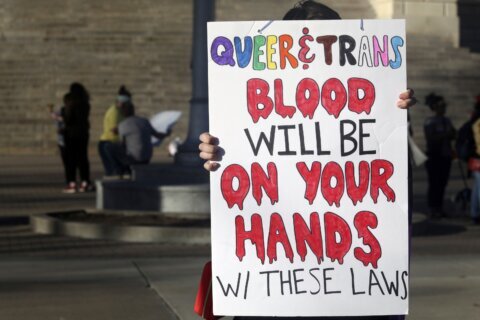WASHINGTON — It may not be surprising to learn that the majority of teens in the U.S. (81 percent) use social media to connect with friends and family. But the frequency with which they’re checking, posting and chatting on their accounts has dramatically increased in the last six years.
In 2012, 34 percent of teens checked social media more than once a day. Now, that number is more than double, with 70 percent of teens logging in multiple times a day, and 16 percent saying they check it almost constantly, according to the latest report from Common Sense Media.
“I think it points to an important skill that needs to be developed in terms of cultivating an ability to use social media and our devices mindfully to make really smart choices about where and when to use them,” said Michael Robb, senior director of research at Common Sense Media.
For the report, the independent nonprofit organization interviewed 1,141 U.S. teens, ages 13 to 17, about their social media behaviors, attitudes and experiences.
The findings show that social media plays an important role in the lives of American adolescents — and in many ways, a positive one. Very few teens in the survey said social media has a negative effect on how they feel about themselves.
“I think contrary to what a lot of people would expect, teens would say that using social media makes them feel less lonely, less depressed, more confident, more popular and better about themselves,” Robb said.
“And I don’t think that’s what most people expect, given the kinds of things you hear in the news about social media and teens.”
Vulnerable teens experience more of the negative effects of social media — including exclusion and cyberbullying — than those who don’t identify as strongly with feelings of depression, low self-esteem and other social-emotional measures. However, Robb explained these vulnerable teens “are also much more likely to say that using social media makes them less depressed, less isolated.”
“And so a really good follow up question is: To what extent are kids actually using social media as a support? I think lots of people think of social media as something that’s driving and causing a lot of problems, and that’s probably true for some kids, but I think it’s a mistake to put a blanket statement on it that if we were to remove social media, all these kids would be less anxious or less depressed, when in fact, we might actually be removing a key source of support for them,” Robb added.
Another take-away is that face time — actual in-person communication, not video calls — is taking a back seat to digital interactions. In 2012, nearly half of teens said their favorite way to communicate with friends was in person. The latest Common Sense Media survey shows that number is now closer to 30 percent. Texting remained relatively constant over the six years, while social media and video chatting methods increased since Common Sense Media’s 2012 report.
“Does that mean kids have horrible social skills or they’re not going to learn empathy? I don’t know. But I think it does bring up questions about: Are there really big shifts in how teens are learning how to communicate?” Robb said.
What’s really important, he added, is modeling healthy habits. For example, switching phones to silent when it’s time for dinner and/or quality time sets a precedent that others should do the same.
Other findings from the Common Sense Media 2018 report:
- Fifty-six percent of teens say social media distracts them doing their homework.
- More than 40 percent of teens say they get frustrated with friends for being on their phones so much when they’re hanging out.
- More than 70 percent of teens believe tech companies manipulate users to spend more time on their devices.
- More than 60 percent of teens say they “often” or “sometimes” come across racist, sexist, homophobic or religious-based hate content on social media.
- About one in four teens say social media is very important for them when it comes to creative expression.
Talking to teens about how social media makes them feel is another important take-away from the data collected, Robb said.
“Helping them to be mindful and think about how they feel before, during and after social media sessions, I think can be helpful,” he added.
And in an online era, reminding children and teens that social media can be just as much of a force for good as it can for bad, is essential.
“Help to explain those skills early and explain that it really reflects poorly on them if they like, share or otherwise are supporting messages of hate or bullying — even as a joke,” Robb said.







